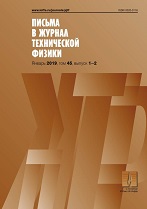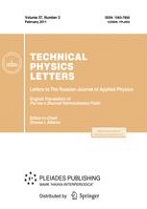|
This article is cited in 7 scientific papers (total in 7 papers)
An electric sensor based on the electrogyration effect in a lead tungstate crystal
M. A. Novikova, A. A. Stepanovb, A. A. Khyshova
a Institute for Physics of Microstructures, Russian Academy of Sciences, Nizhnii Novgorod
b Lobachevsky State University of Nizhny Novgorod
Abstract:
We present original results of an investigation of the specific features of optical electrochirality (electrogyration) in a lead tungstate crystal. Since this crystal exhibits neither the Pockels effect nor the inverse piezoelectric effect, the electrogyration effect can be used to create a fast-response electric sensor for remote monitoring of high-speed processes in high-voltage electric networks. A fiber-optic sensor prototype has been manufactured using optical elements intended for fiber communications.
Received: 27.09.2016
Citation:
M. A. Novikov, A. A. Stepanov, A. A. Khyshov, “An electric sensor based on the electrogyration effect in a lead tungstate crystal”, Pisma v Zhurnal Tekhnicheskoi Fiziki, 43:8 (2017), 17–25; Tech. Phys. Lett., 43:4 (2017), 372–375
Linking options:
https://www.mathnet.ru/eng/pjtf5936 https://www.mathnet.ru/eng/pjtf/v43/i8/p17
|


| Statistics & downloads: |
| Abstract page: | 38 | | Full-text PDF : | 10 |
|





 Contact us:
Contact us: Terms of Use
Terms of Use
 Registration to the website
Registration to the website Logotypes
Logotypes








 Citation in format
Citation in format 
